Research
Measuring the Binary Fraction of Type II-P/II-L Supernova Progenitor Systems
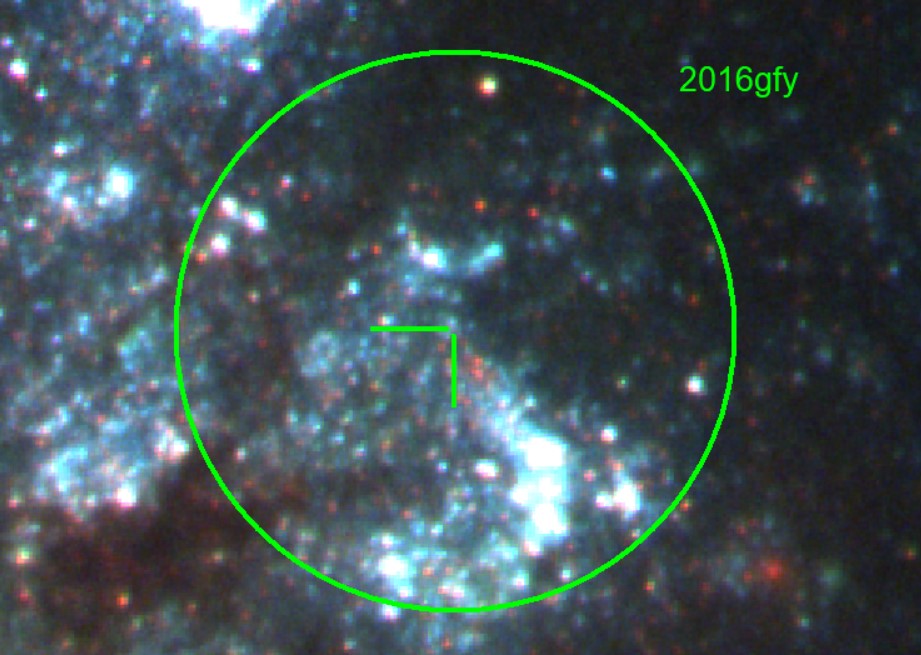 Figure 1. Image of 2016gfy found in NGC 2276. Using Hubble Space Telescope images, this photo was made in SAOimageds9.
Figure 1. Image of 2016gfy found in NGC 2276. Using Hubble Space Telescope images, this photo was made in SAOimageds9.
Abstract
Type II-P and II-L supernovae (SNe) are known to have red supergiant (RSG) progenitor stars with initial masses of M≅7-8M☉ (Smartt 2015). In recent years, it has been theorized that many of these RSGs evolve in binary systems with close interactions that affect their evolution (Zapartas et al 2021). These RSGs may be interacting binaries actively undergoing mass transfer, allowing them to stray away from their stellar birthplaces and explode as violent SNe. Using data from the Hubble Space Telescope (HST), we present a statistical analysis of 43 Type II-P and II-L SNe within a distance of 40Mpc and discovery dates from 1999 to 2022. By collecting photometric data, we are able to identify the nearest O-type star to the SNe. Using the O-type star as an indicator of where the progenitor of the SN may have been born, we determine the distance between the O-type star and the SN through astrometry. Since the average separation between Type II SNe and RSGs, which are known to be effectively single stars in the Milky Way, LMC and SMC, any large differences between this separation and RSG stars observed in situ would favor the binary scenario. Using this, we can estimate whether binary interactions strongly affect the Type II SN progenitor star population relative to the population of RSGs.
One challenge is obtaining sufficiently high-resolution imaging of the supernova, such as the laser guide star adaptive optics imaging of SN 2019yvr, needed to precisely identify the location of the supernova and associate it with a single star. I have developed image processing and analysis tools to compare supernovae with pre-explosion imaging, especially from the Hubble Space Telescope. As part of this analysis, I recently updated the Keck/OSIRIS geometric distortion terms, which can be used for all archival OSIRIS imaging.
I am also very interested in dust absorption and emission from material in the progenitor star environment and the extent to which dust obscuration biases our understanding of these systems. Dust grains emit most of their radiation at wavelengths greater than 1 micron. Currently, there is a dearth of deep, high-resolution imaging of supernova host galaxies at these wavelengths. I am actively working on new analysis techniques and observing programs using the Spitzer Space Telescope, Hubble Space Telescope, and ground-based infrared telescopes to obtain pre-explosion infrared imaging of supernova progenitor stars. As the James Webb Space Telescope will soon make deep, high-resolution infrared imaging widely available, these data will form a core sample for analysis of dust in progenitor star environments.
Introduction
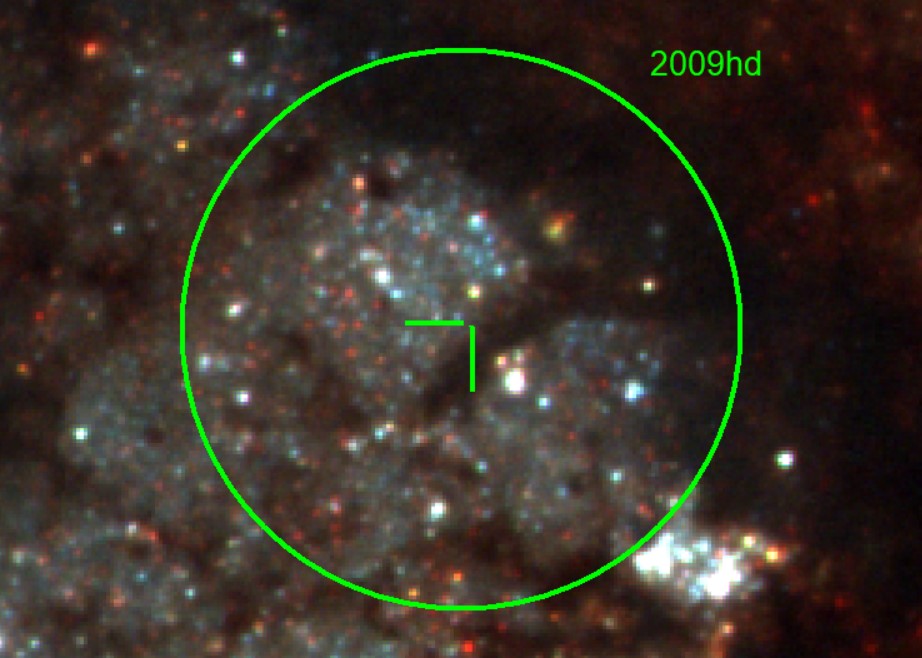 Figure 2. Image of 2009hd found in NGC 3627 (M66). Using Hubble Space Telescope images, this photo was made in SAOimageds9.
Figure 2. Image of 2009hd found in NGC 3627 (M66). Using Hubble Space Telescope images, this photo was made in SAOimageds9.
Core collapse supernovae (CCSNe) are the terminal explosions of stars with masses M ⪆ 8 M☉ (O’connor & Ott 2011). Type II SNe are luminous transients with peak absolute magnitudes typically brighter than -16 mag and are classified by the have very broad lines of hydrogen in their spectra (Filippenko 1997). Type II-P and II-L SNe are almost identical in their initial spectra, both having near featureless spectra due to strong continuum emission, but have a key difference: their light curves. Type II-P SNe have light curves that plateau due to hydrogen recombination which provides excess energy that is re-emitted on a timescale. Type II-L SNe have a linearly declining light curve with no obvious plateau. This difference in Type II-L SNe may be a result of one or more scenarios: the progenitor’s envelope is very expanded (causing the envelope to have a lower density), the hydrogen envelope may have relatively lower mass or maybe the progenitor may have more circumstellar matter compared to Type II-P.
Recently, a statistical anomaly has arisen across Type II SNe known as the “red supergiant problem,” stating a lack of high-mass progenitor stars for all types of SNe (Smartt 2015). As Type II-P and II-L SNe contribute 50-75% of SNe associated with high mass progenitors, M ≥ 18 M☉ (Langer 2012), it begs the question: with the lack of high-mass progenitors, what if these progenitors are actually affected by binary stellar evolution and only appear as a lower mass star near the end of their lives? It is dire to take the next step and estimate the binary fraction. The issue with single star progenitors of initial mass M ⪆ 18M☉ is that models predict that Type II CCSNe result in black hole (BH) formation and failed SNe (Sukhbold et al 2016). Failed SNe are when a star’s luminosity increases, like a SN, but does not result in a terminal explosion and luminous transient like a SN. The lack of an increase in flux in a failed SN is due to the fact that as the progenitor star is undergoing core collapse, it collapses into a black hole rather than producing a “successful” SN. In fact, observationally, this scenario is consistent with the finding that RSGs M ≥ 18M☉ form BHs without any visible SNe. In nature, RSGs have been observed with much higher mass than the range posited for Type II-P/II-L SNe, for example, Levesque et al. (2009) observed RSG WOH G64 with an initial mass of Mi ≅ 25M☉. This observational inconsistency may be explained through binary evolution. Higher initial mass RSGs may undergo binary interactions and lose their envelopes through mass transfer. This can lead to these binary systems exploding with lower luminosities or depleted hydrogen envelopes, which would cause the star to appear as a lower mass or even a different stellar type. For example, SN1987A is a very well studied SN whose progenitor star is known to have been a Type B3-I blue supergiant (Walborn et al. 1987). The binary scenario could be one possible resolution to the problem as binary interaction would cause a high mass RSG to evolve into another stellar type and explode as a SN.
Methods
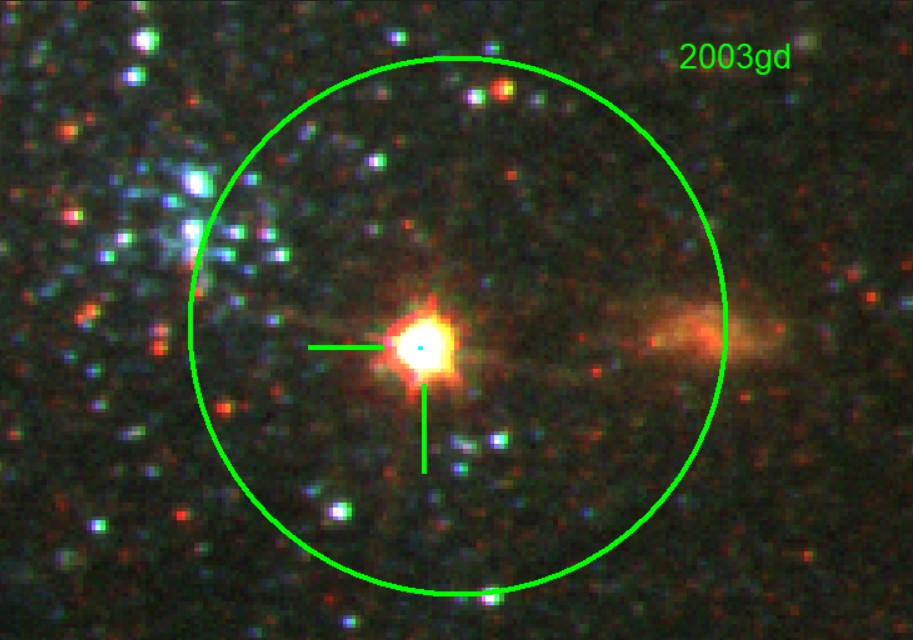 Figure 3. Image of 2003gd found in M74. Using Hubble Space Telescope images, this photo was made in SAOimageds9.
Figure 3. Image of 2003gd found in M74. Using Hubble Space Telescope images, this photo was made in SAOimageds9.
Using the hst123 pipeline (Kilpatrick 2021) we downloaded HST data of 43 Type II-P/II-L SNe within 40 Mpc. The hst123 pipeline allows us to download all the current, public, HST data by targeting the coordinates of each SN in the MAST archive. Once the images were downloaded, they were analyzed in SAOimage ds9. In ds9, all the images from an observed SN were opened and were thoroughly checked for the quality of the reduction and the image alignment. The alignment was checked by gauging if there was a visual shift in the position of the point sources in the images. The shift would be flagged as unaligned if there were a shift ⪆ 0.05 arcsec of the point sources. Data from a wide range of wavelengths (UV to optical) were used, however images that were taken in narrow or medium bands were excluded as these data are relatively insensitive to the continuum emission from massive stars, such as the ones localized around the environment of the SNe.
Once we confirmed the images were properly reduced, aligned and the necessary filters were excluded, we used source extractor to perform photometry of all point sources near the location of the SN. The source extractor pipeline (Bertin, E. & Arnouts, S. 1996) performs photometry on point sources near the SN based on an input PSF shape, and we use the output to distinguish between noise (dark current and cosmic rays), extended sources, and actual point sources resembling stars. We then performed a cross matching procedure where an image was chosen to be the reference image and then compared to the other images to ensure the point sources are within a radius of 0.05 arcsec of each other. This allowed a confirmation of which ones are sources and which ones are possible artifacts.
After cross matching point sources across different images, we are able to compare the photometric data for each source to MESA Isochrone & Stellar Tracks (MIST) models in order to classify them with a specific stellar type and mass. The MIST models are computationally modeled single stars and contain evolutionary paths for stars for all relevant masses and metallicities. These models allow us to assign star classification from the HST photometry of point-like sources near the location of the SN. The classification code assigns a stellar type to each point source and then determines which is the closest main sequence O-type star. The way we define an O-type is a star with an initial mass Mi ⪅ 18M☉ ⪅ 60M☉. We also assume there is zero excess line-of-sight extinction to each star beyond the Milky Way contribution. Once all the stellar classifications are made we find the nearest O star to the SN. By determining the location of the O star, we can infer that the SN was most likely born in the same stellar nursery as this star. We show, by measuring the offsets from Type II SNe and the nearest O-type stars in their environments, the effect binary stellar evolution on Type II SN progenitors.
Results
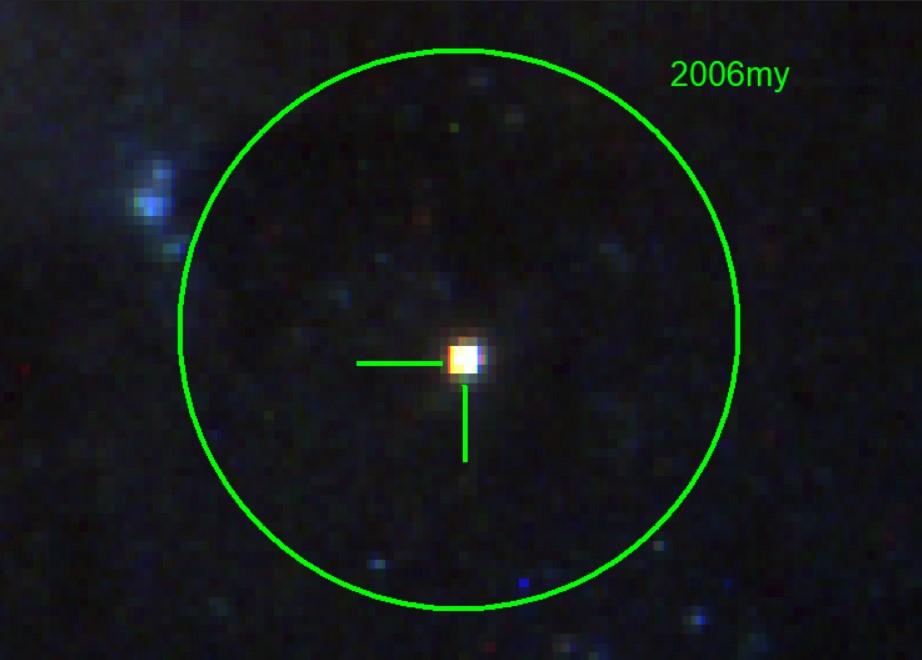 Figure 4. Image of 2006my found in NGC 4651. Using Hubble Space Telescope images, this photo was made in SAOimageds9.
Figure 4. Image of 2006my found in NGC 4651. Using Hubble Space Telescope images, this photo was made in SAOimageds9.
As seen in figure 5, the distribution of the closest O-type star to each Type II-P and II-L SN reveals that binary stellar evolution has minimal effect on the progenitors of Type II SNe, if any at all, compared to the overall population of RSGs. Although it does not suggest that binary stellar evolution has a strong effect on the progenitor stars of Type II SNe compared with RSGs overall, there does appear to be a visual shift in the distribution of Type II SNe compared with RSGs. We performed a Kolmogorov-Smirnov test on these two distributions and determined that the likelihood they are drawn from different populations is only 14%, indicating there is no statistically significant difference between these two populations. This implies that both Type II SN progenitor stars and the overall population of RSGs appear to be drawn from stellar populations of roughly the same age. This finding contradicts the “red supergiant problem,” which would imply that Type II SN progenitor stars are statistically older than and thus lower mass than the overall population of RSGs. This is counterintuitive as, theoretically, models show that RSGs with masses M ≥ 18M☉ result in failed SNe and form BHs. Our analysis therefore implies that, statistically, there are no “missing” RSGs, meaning that higher mass stars are included in the population we constructed from the overall population of Type II SNe, and therefore the luminosities and masses of directly-identified progenitor stars are either incorrect or do not enable a statistically significant statement about the distribution of Type II SN progenitor stars.
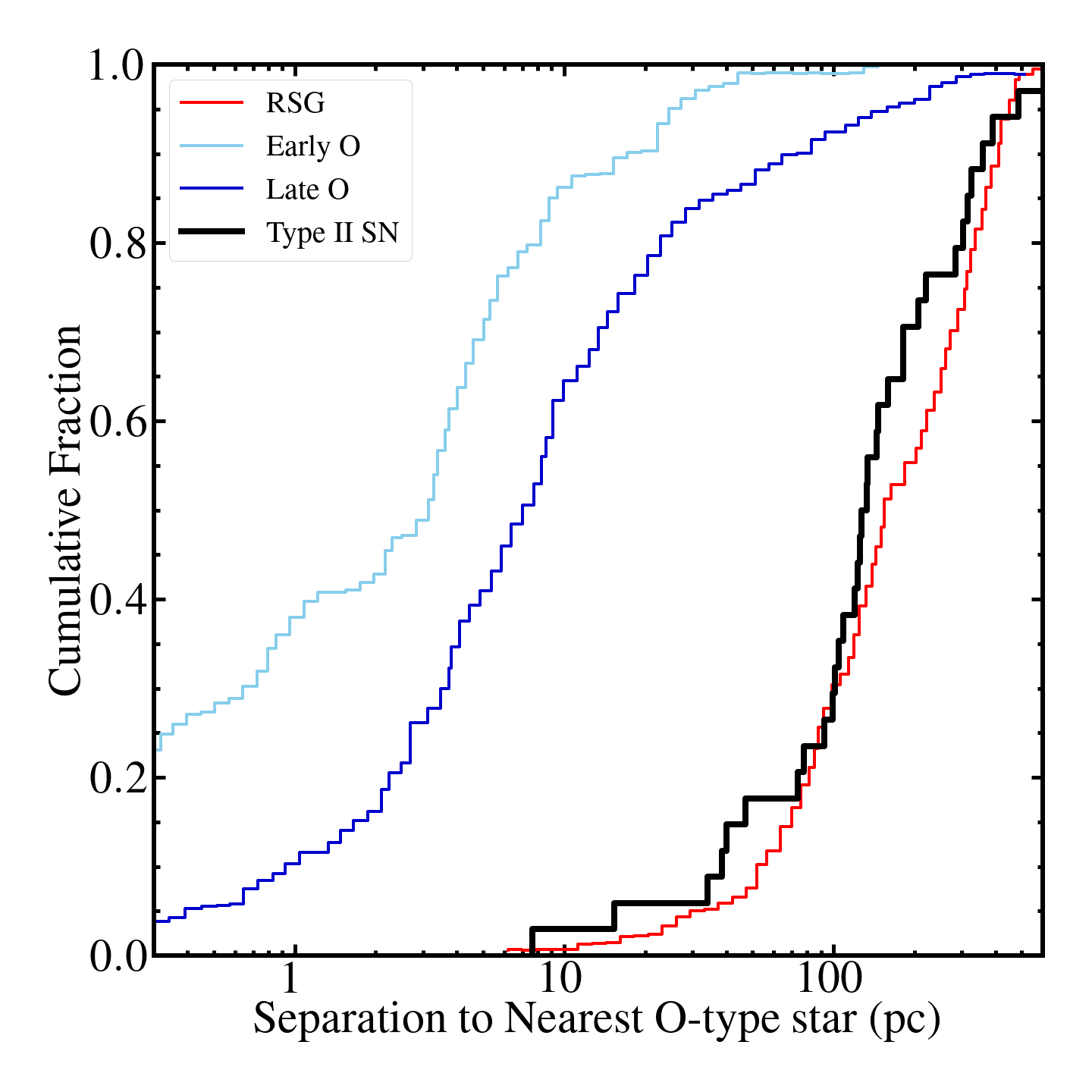 Figure 5. Cumulative distribution plot illustrating the differing degrees of isolation among various classes of stars (Early Ostars in light blue, Late O stars in dark blue, and red supergiants in red). The black line plotted is the trend for Type II-P/II-L SNe. Classes of SNe that are not affected by binary stellar evolution would appear further to the right, towards the RSGs.
Figure 5. Cumulative distribution plot illustrating the differing degrees of isolation among various classes of stars (Early Ostars in light blue, Late O stars in dark blue, and red supergiants in red). The black line plotted is the trend for Type II-P/II-L SNe. Classes of SNe that are not affected by binary stellar evolution would appear further to the right, towards the RSGs.
Conclusion
This statistical analysis measuring the binary fraction will help to inform future work with RSGs. As stated, while binary stellar evolution may not have a significant effect on Type II SN progenitor stars, our analysis of the separations between these stars and nearby young stellar populations is consistent with RSGs as a whole. We therefore infer that the “red supergiant problem” is either not statistically significant or uses incorrect or incomplete measurements of RSG masses to conclude that there are “missing” high-mass RSGs in the population of Type II SN progenitor stars. Statistically, it is possible that Type II SNe may have younger progenitor stars than RSGs, as it would imply they are coming from more massive stars than RSGs.
Acknowlegments
This material is based upon work supported by the National Science Foundation under grant No. AST-2149425. Thank you so much to Northwestern University’s CIERA REU program and to Dr. Charlie Kilpatrick for providing me with this amazing opportunity. I would also like to give a very special thank you to Dr. Charles D. Kilpatrick and Dr. Wen-fai Fong for advising me on this project. A special nod to Dr. Aaron Geller and Dr. Tjitske Starkenburg for their guidance and leadership of the program.
References
Bertin, E., & Arnouts, S. 1996, A&AS, 117, 393
Choi, J., Dotter, A., Conroy, C., et al. 2016, ApJ, 823, 102
Filippenko, A. V. 1997, ARA&A, 35, 309
Kilpatrick, C. D. 2021, charliekilpatrick/hst123: hst123, Zenodo, vv1.0.0, Zenodo, doi:10.5281/zenodo.5573941
Langer, N. 2012, ARA&A, 50, 10
Levesque, E. M., Massey, P., Plez, B., & Olsen, K. A. G. 2009, AJ, 137, 4744
O’Connor, E., & Ott, C. D. 2011, ApJ, 730, 70
Smartt, S. J. 2015, PASA, 32, e016
Sukhbold, T., Ertl, T., Woosley, S. E., Brown, J. M., & Janka, H. T. 2016, ApJ, 821, 38
Walborn, N. R., Lasker, B. M., Laidler, V. G., & Chu,Y.-H. 1987, ApJL, 321, L41
Zapartas, E., de Mink, S. E., Justham, S., et al. 2021, A&A, 645, A6






